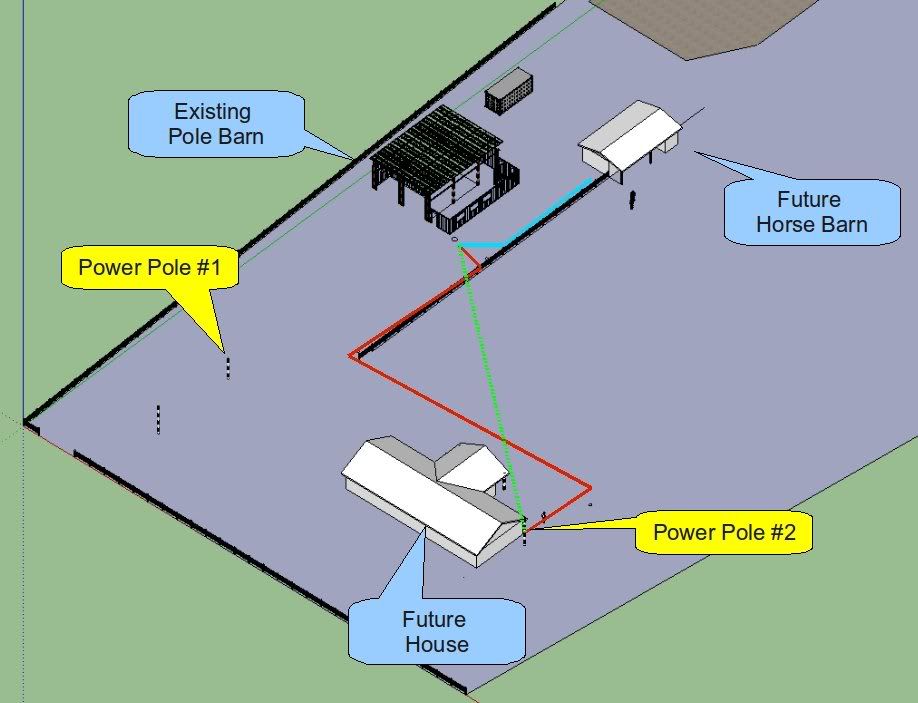heitjer
Bronze Member
All,
I have been reading up on some post here and I am trying to figure out some basic costs before I start speaking with the local Energy Company.
I purchased a 6.3 acre lot and I have already two power poles & meters on the lot (two mobile homes in the past). Here is a sketchup shot of the front lot. You can see the two meters. #1 is in the middle of nowhere and I like to remove it. Number #2 is close where we like to have our future house.

The red line (~275 ft) indicates a power line that I can envision running on telephone posts that also can use to illuminate (separate electrical line) the riding arena behind the house. The green dottet line (~195 ft) indicates a possible buried power line. The blue-turquoise line (~75 ft) indicates a buried line from the existing pole barn to the future horse barn.
I figured I need 100A at the pole barn and about a 20A at the horse barn (max).
I would like to hear some recommendations from you whether I should go buried or overhead (i prefer buried but I am afraid this cost 3 times more...).
I meet with the power company rep sometime in the next two weeks and will get his opinion but like to come prepared with good questions. So please throw your wisdom at me.
Thanks in advance!
I have been reading up on some post here and I am trying to figure out some basic costs before I start speaking with the local Energy Company.
I purchased a 6.3 acre lot and I have already two power poles & meters on the lot (two mobile homes in the past). Here is a sketchup shot of the front lot. You can see the two meters. #1 is in the middle of nowhere and I like to remove it. Number #2 is close where we like to have our future house.

The red line (~275 ft) indicates a power line that I can envision running on telephone posts that also can use to illuminate (separate electrical line) the riding arena behind the house. The green dottet line (~195 ft) indicates a possible buried power line. The blue-turquoise line (~75 ft) indicates a buried line from the existing pole barn to the future horse barn.
I figured I need 100A at the pole barn and about a 20A at the horse barn (max).
I would like to hear some recommendations from you whether I should go buried or overhead (i prefer buried but I am afraid this cost 3 times more...).
I meet with the power company rep sometime in the next two weeks and will get his opinion but like to come prepared with good questions. So please throw your wisdom at me.
Thanks in advance!
